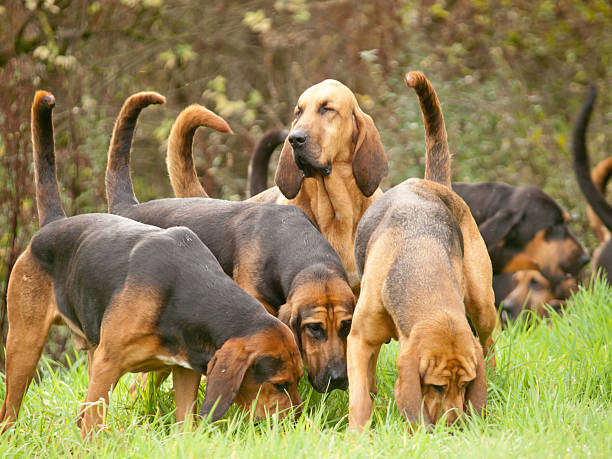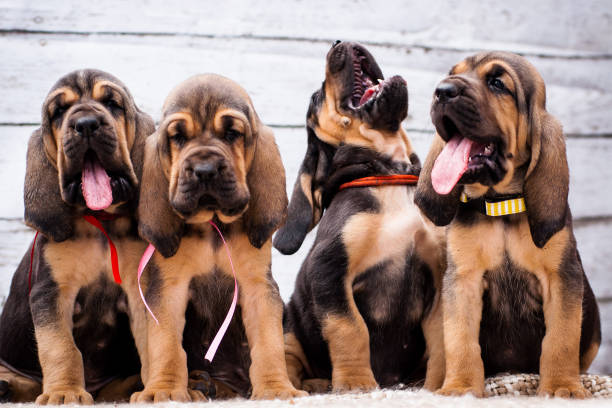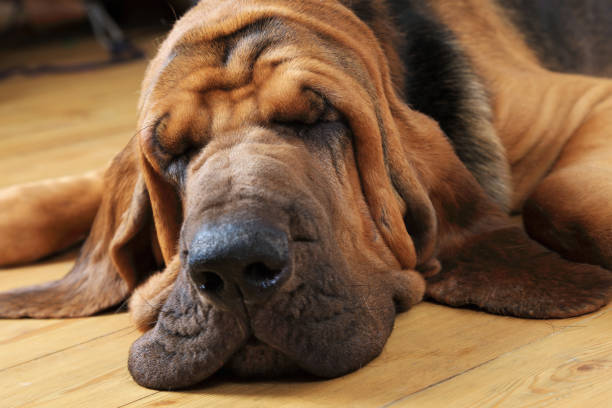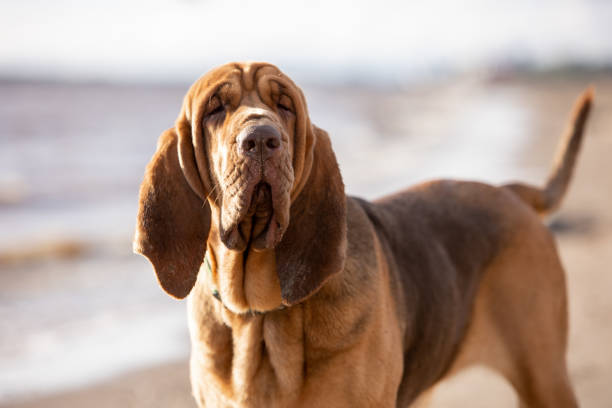Bloodhound

Breed History:
The Bloodhound is a historic breed with roots stretching back over a thousand years. Perfected by monks at St. Hubert in Belgium rather than created from scratch, these scent trackers were later introduced to England by the Normans before arriving in the United States. Renowned for their tracking prowess, Bloodhounds have hunted animals, criminals, and children. Today, this breed remains a tracker and companion, noted for its scenting ability and distinctive voice.
|
Gender |
Height |
Weight |
|
Male |
63-69 cm |
41-50 kg |
|
Female |
58-63 cm |
36-45 kg |
Size – Medium-Large
Life Expectancy: 10-12 years

Breed Appearance:
The Bloodhound has a long muzzle, drooping ears, and loose, wrinkled skin that accentuates its distinctive jowls and soulful eyes. Typically, its short, coarse coat comes in black & tan, liver & tan, or red & tawny shades. It features a long, prominent muzzle with a black nose, deep-set eyes, and drooping ears. Its well-muscled neck with pendulous loose skin, powerful shoulders, sturdy forelegs, and elegantly curved tail.
Breed Type - Family/guard:
The Bloodhound is an excellent family companion, known for its kind, patient, and affectionate temperament. It thrives on human interaction and forms strong bonds with its family, especially children, accepting playful handling with gentle tolerance.
While not a conventional guard dog, the Bloodhound’s alertness and keen sense of awareness often prompt it to bark when unfamiliar sounds or visitors are detected, serving as a subtle watchdog.

Training:
Begin training early using positive reinforcement and clear commands. Reward obedience with praise and treats, avoiding harsh discipline to maintain trust. Consistent socialization helps your Bloodhound interact safely with children, other dogs, and visitors. Use secure, fenced areas and always keep them on a leash during walks because they are inclined to follow scents.
Health & Care:
This breed is prone to bloat, so it's best to feed two or three small meals a day rather than one large one. Avoid exercising your dog immediately after meals to prevent stomach cramps. Additionally, the breed is susceptible to hip dysplasia and ear infections, so regular veterinary check-ups are important.
A padded bed is recommended to help protect the joints from calluses and be aware that some dogs may develop entropion, a condition where the eyelids turn inward.

Living Condition:
The Bloodhound can adapt to apartment living if given sufficient exercise. While relatively inactive indoors, they thrive best in homes with at least an average-sized yard.
Exercise:
Bloodhounds love a good run and require plenty of exercise. They should be taken for a long daily walk, but be aware that if they pick up an interesting scent, it may be difficult to get their attention. With an incredible level of stamina, they can walk for hours and would greatly enjoy hiking with you. However, be mindful not to overtire them during walks until they are fully grown. As a large breed that grows quickly, they need energy to develop strong bones, joints, and muscles, so it's important to balance exercise appropriately for their growth stage.
Grooming:
The smooth, shorthaired coat of the Bloodhound is easy to groom. Use a hound glove for regular grooming, and bathe only when necessary. A rub with a rough towel or chamois will leave the coat gleaming. Regularly clean their long, floppy ears to maintain hygiene. Bloodhounds do have a distinctive doggy odour, which some people may find offensive. This breed sheds moderately, so regular grooming helps manage loose hair.

Advantages:
-
Exceptional sense of smell – best scent tracker among dogs
-
Gentle, affectionate, and good-natured
-
Patient and tolerant with children
-
Generally good with other dogs and pets
-
Loyal and devoted to family
-
Impressive endurance and determination when working
Disadvantages:
-
Stubborn and independent – can be hard to train
-
Prone to drooling and slobbering
-
Needs lots of space and regular exercise
-
Strong tracking instinct – may follow scents and wander off
-
Can be vocal – howling and baying are common
-
Prone to health issues like bloat, ear infections, and hip dysplasia
-
Loose skin and facial folds require regular cleaning

